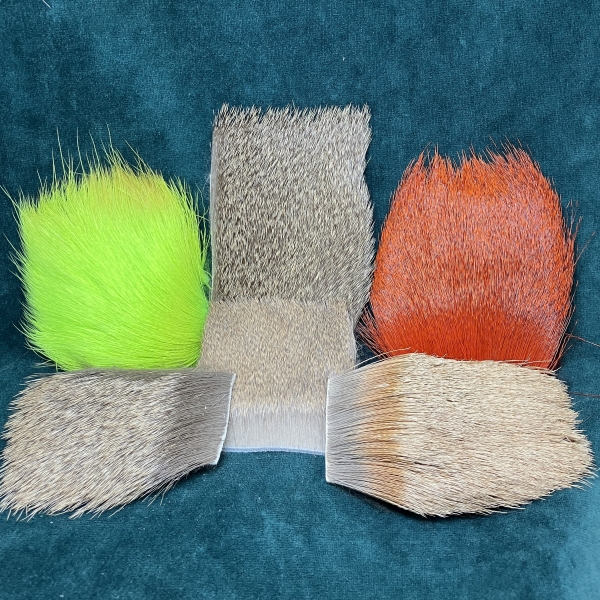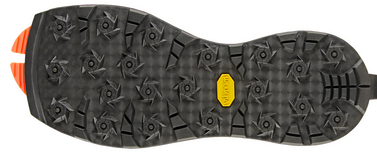I really hate that I'm typing this report so quickly after the fall outlook, but hopefully we get another good winter with a lot of precipitation and especially snow. The fish seemed to do well over the summer, and another boost to the water table can only help the fish at this point. More space for juvenile fish to rear, more space for trout bugs to grow, deeper thermal refuge from cold and hot water temperatures, more water is always good. This is the mantra I recite to myself when no street within 4 blocks of my house has been plowed in a week and the driving surface is now hard and icy enough to play hockey on.
The winter season is the least volatile in terms of how the trout behave so it's relatively easy to have the right bugs when you do feel like getting out. Moving water will have BWOs (check our BWO article out) and midges no matter where you go as long as the weather isn't really cold. Small black/brown winter stones will show up later around January/February as well. Groundwater fed places like the Metolius and to a lesser extent the Fall will have more bug variety than other places. October caddis/silver striped sedges through February and some smaller caddis are all possible where the water temps are stable to round out the dry fly action. If you get a stretch of warm days in February, skwala stonefly nymphs will begin to move and can be productive on the middle and lower D. The adults are more March and April, so that'll be in the spring fishing outlook. Subsurface, BWOs and midges again are the most reliable, but stonefly and small caddis nymphs can work year round anywhere outside of the Fall and Crooked. Eggs will be in the drift pretty much everywhere but the Fall above the falls, where they are supposed to only stock triploid fish that don't attempt to spawn. Regardless, eggs still work there and pretty much anywhere else through the winter. Fall chinook spawning in the lower Deschutes don't quite produce the same trout fishing that they do in Alaska, but it's a hell of a lot cheaper to get there and 14-20" fish aren't the worst way to spend your day in the winter. If you do fish the lower Deschutes, make sure you know how to identify redds and don't get so close to the spawning salmon that you spook them off their redds or step on the incubating eggs. Chinook and their redds will be pretty noticeable. They are spots of clean gravel, lighter in color than the gravel around it, and about 4-6 feet long and 2-3 feet in diameter. If you step on them, you could crush the eggs that are underneath the gravel, which means less salmon next year, which means less nutrients returning to the ecosystem, which means less food for juvenile fish, etc etc. The redds are usually pretty obvious though when Chinook are digging them. Chinook will be in various states of decay this time of year in the Deschutes, and they often get a telltale white "skunk" stripe down their backs, along with being dark and having ragged/decaying tails. Whitefish also spawn around November, so their eggs will be on the menu in the middle D, lower D, Metolius, and Crooked. Whitefish eggs are a bit paler than salmon eggs due to diet. Whitefish also broadcast spawn. Broadcast spawning means the whitefish pod up and spawn together without digging specific redds. Their eggs are slightly adhesive, and instead of getting placed into a redd like salmon and trout eggs, whitefish eggs just stick to the bottom. The eggs tend to bounce around a bit before they come to rest, so the eggs can be more spread out in the drift rather than concentrated directly behind pods of fish, so you can fish them throughout the whole river without worrying too much if you're directly behind spawning fish.
New Closures: Pelton to the northern boundary of the Warm Springs Reservation - Dec 31st
Stillwater is not really much of anything outside of leeches and chironomids through the winter. Before the snow starts sticking, stripping streamers can be very effective but you're going to have to brave the elements. Fish in lakes are generally going to be either under ice or very sluggish or both. Paulina, East, and Chickahominy are places people will ice fish but if you're flyfishing it can be tough because you have to cut a real long hole in the ice for your cast to fit into.
Steelhead are around through April, but in the lower Deschutes most fish will be either upriver or in tributaries by the time the Warm Springs section closes December 31st. The John Day and Grande Ronde will have fish and be open through the winter as well, but those fisheries are not for the faint of heart. Everything east of Hood River in Oregon only has summer steelhead, but coastal rivers get winter run fish coming in throughout the season also. As usual with steelhead, it's mostly about water temperature. The colder the water is, the less they want to move, so you'll have to get deeper later in the year. Check out our article on steelhead fishing for a more in depth look.


